23 April 2018
By portermathewsblog
via domain.com.au
When was the last time you ventured to the very back of your bathroom cupboards? Here are some tips to declutter and organise this area to save you time (and money).

Photo by Dulux Paint
Whether you’ve been living in your home for 15 years or 15 weeks, a bathroom declutter will save you time getting ready in the morning. Plus, you’ll be surprised by how much accumulated clutter you can easily let go of, giving you much more open space.
1. Empty out
First, grab a rubbish bag for anything that needs to go directly into the bin. Ensure some wipes are nearby to clean the cupboards and drawers down once everything is out. Then create space on the floor or benchtop where you can sort things. I usually use the floor, as you can empty every single item out of the bathroom cupboards, drawers, shelves and off the vanity top and lay them out so you can see what you have.
While the cupboards are empty, take the opportunity to give them a wipe out, as bathroom cupboards often end up covered in product, dust and hair. No doubt you’ll find some lonely hair clips living at the back of the bathroom cupboard too.

Photo by Zeitgeist Photography
2. Dump expired products
Once you have everything on the floor, the next step is to throw out any expired products. In almost every bathroom there are products that have expired (sometimes ones that are decades old) that need to be thrown away. Grab your rubbish bag and you’ll be surprised how many items end up in it.
Remember that you put these products on your skin, hair and nails, and you don’t want to absorb out-of-date chemicals into your body. If you can’t remember when you purchased it, the chances are it’s time to discard.
This is also a good time to dispose of products that you keep thinking you’re going to use, but probably never will. Orange nail polish? Out. Purple eye shadow? Out. Self-waxing kits? Unless you’ve used them in the last six months, say bye bye.

Photo by Capital Closets
3. Categories and containers
My key organisational advice for bathroom cupboards is to use storage baskets inside the cupboards or drawers, so that you both contain categories and are able to access items quickly and easily. The following categories are common to almost every bathroom I’ve ever helped declutter and organise:
- Make-up
- Hair products
- Sunscreen
- Tanning sprays and lotions
- Moisturiser
- Basic first aid
- Sanitary products
- Shaving
- Nail polish
- Eye care
- Medications
- Perfumes
I suggest using baskets with handles to make accessing things at the back of the cupboard easier. This way you don’t have dead space at the back where products fall out of sight and out of mind. Use either a black marker or label maker to label the containers, so you can quickly and easily see what is there. You can then put things away quickly, without having to pull each basket out first.
One added advantage of having products stored like-with-like is that when you want to paint your nails, for example, instead of rummaging through a drawer trying to find the polish, file and top coat you can quickly and easily grab the basket where everything is kept.

Photo by MasterBrand Cabinets, Inc.
If you have a large make-up collection, it’s even more helpful to further categorise the contents into different types of products. You might like to have smaller containers, keeping lip colours, eye products, foundations and blushes separate. This will also help you know what products you have, and will save you money. When you run out of one eye liner, you can quickly and easily find another one that you already own instead of buying a replacement.

Photo by Dettling-Architekten
4. Use it
Now that you know what you have, a useful tip is to use the products you already own rather than buying new products. Use the sunscreen you have before you buy any extra. Finish the hand cream you have before you trying a new product. Rediscover lipstick colours you forgot you owned. Your wallet will thank you for it.
You may also rediscover forgotten products that inspire you; think massage oil, a pedicure set, bubble bath or hair treatments. Take some time out one night to pamper yourself a little bit… it can be your reward for doing a great job of decluttering your bathroom cupboards.
Comments (0)
23 April 2018
By portermathewsblog
via domain.com.au
In Australia’s perpetually crowded rental market, the odds of securing any sort of home – let alone one that ticks all your boxes – can seem daunting.
Fast-increasing prices and the advent of so-called “rental bidding” further complicate the picture. And during the summer months, fluctuations in stock can create wildly variable conditions from week to week.
But there is reason to be optimistic. Despite perceptions that the rental market is somehow rigged – particularly in large cities such as Sydney and Melbourne – agents and advocates say that ordinary Aussies stand a good chance of renting in 2018.
 Consider house-hunting in early January when there is less competition. Photo: Edwina Pickles
Consider house-hunting in early January when there is less competition. Photo: Edwina Pickles
If you understand what landlords are looking for, are willing to take care during the application process and choose the most appropriate month to search, you might be surprised by what you can secure.
1. Always write a cover letter
Few agents ask for one, but including a cover letter with your application can dramatically improve your chances of securing a rental.
Crucially, a one-page cover letter can find its way to the landlord, who is almost never present at inspections but has final say over who is granted the lease.Making a personal connection with the landlord through a cover letter can be very valuable.
 Make sure you have all your documentation ready before the inspection. Photo: Pat Scala
Make sure you have all your documentation ready before the inspection. Photo: Pat Scala
“Make it a good story,” says Eileen Carroll, sales director of Ray White Glebe. “Tell us why you’re the best person for the property. A little story about yourself will help your cause.”
2. Gather everything you’ll need – and then some
While some agents do not require additional documentation such as proof of ID and written references to be supplied at the time of application, Carroll says prospective tenants should submit these documents anyway.
“Have it all ready, so if you are accepted, you can actually secure the property,” she says. “If I’m chasing people for these documents before they’ve even signed the tenancy, alarm bells start to ring.”
 Agents may move on to the next applicant if you don’t have your deposit ready. Photo: Dan Soderstrom
Agents may move on to the next applicant if you don’t have your deposit ready. Photo: Dan Soderstrom
Providing ample references and other documents from the outset can also give you an advantage over less organised applicants.
“If someone submits an application with just a payslip from a month ago and a passport, it’s not really that interesting to me,” Carroll says. “But if the application has a covering letter, two current payslips, a personal or work reference and they’ve completed their 100 points of ID, I’m impressed.”
3. Apply online if you can
Scanning your hard-copy documents and completing an online application form may be irksome and time-consuming, but for agents it’s a godsend.
 Even if a property is popular, don’t be tempted to pay more than the advertised price. Photo: Eddie Jim
Even if a property is popular, don’t be tempted to pay more than the advertised price. Photo: Eddie Jim
“I had eight properties open two weeks ago and I leased all of them,” explains Carroll, “so the paperwork was miles long. Online applications make my life easier.”
Most online application forms also include a section for additional comments, so make sure you use it. “The standard form we use actually asks applicants to explain why they like the property in question, and I find that really helpful,” Carroll says. “It’s the first thing I go to now in the application because it gives me a better indication of who we’re dealing with.”
4. Think carefully before offering more than the listed price
Australia’s chronic shortage of inner-city housing has led to an increase in so-called “rental bidding”: offering more than the asking price in order to beat out the competition.
Leo Patterson Ross, advocacy and research officer at the Tenants Union of New South Wales, concedes that this strategy can be effective for those who can afford it. But he cautions that rental bidding can set a dangerous precedent.
“It’s pushing up prices not only for others but for yourself,” he says. By indicating a willingness to pay more than advertised, tenants may increase the likelihood of further rent rises in future, which could ultimately make the property unaffordable.
5. Be ready to pay your deposit
Having your application approved does not guarantee that the agent will hold the property for you. “If I call someone in the morning, tell them their application has been approved and ask for their deposit, and they say, ‘Oh, I’ll pay it later this afternoon’, I automatically go to the next application,” says Carroll.
“If they’re going to pay it later that afternoon, that tells me they’re waiting on the outcome of another application or they can’t afford my property.”
Carroll says delaying payment of your deposit by even a few hours can be risky. “I don’t want to lose my other applicants waiting for a deposit to be paid. Waiting a day for the deposit could mean my other applicants have moved on to other properties.”
6. Choose the most suitable month to apply
Unlike most of the year, when the number of properties on the Australian rental market is relatively stable, the months of January, February and March vary wildly in terms of volume.
According to Domain data, rental listings are at their lowest levels between late December and late January, when much of the country is on holiday. But some rental properties are open for inspection during this time.
Carroll says house-hunting in quiet early January can mean less competition and a better chance of striking up a relationship with a rental agent.
If you’d like to maximise your options, wait until late January or early February, when many landlords return from holidays. But remember that university students house-hunt during this time, increasing competition in less expensive suburbs.
If you can afford to wait until March, you’ll find the market returning to normal levels – and there may be an opportunity to pick up a bargain rental that didn’t lease during the February rush.
7. Don’t despair if you are young or haven’t rented before
Many prospective tenants assume that age and wealth trump all other considerations in the eyes of agents and landlords. But the truth is more nuanced.
“Real estate agents and landlords are ultimately trying to assess risk when choosing applicants,” says Patterson Ross. “The factors they are mainly considering are the ability to pay the rent, and the likelihood of damage occurring to the property.”
“A previous rental history is part of demonstrating that you represent a lower risk, but you can do this in other ways as well – most likely character references from employers or other people who can talk about things like your responsibility, cleanliness and so on.”
Carroll says she has rented properties to people without employment who could demonstrate significant savings, and to others who had less money than their competition. “For me, it’s ultimately about whether the application stands out or not,” she says.
Comments (0)
20 April 2018
By portermathewsblog
via popsugar.com.au

Image Source: Woods & Warner
Sleep is important. Like, really important. It contributes to your physical and mental health, happiness and all-round well-being. Step one of getting it right, is creating a space that relaxes and lulls you to sleep, rather than triggering or reminding you of all your to-dos and stresses.
Before you figure out what should be in your snooze palace (yep, that’s what we’re calling it now), it’s good to know what should definitely not be making an appearance behind the palace doors. So we asked interior designers, a lighting scientist and a sleep brand founder (who knows a thing of two about getting a good night’s sleep) to lend their expertise. Heed their advice and nights of perfect rest are all yours. And yes, you will totally feel like a princess. Princess Snooze.
1. Pets
Research shows that 30 percent of pet owners who share their beds report waking up at least once a night because of their furry loved ones. If you want a night of wondrous, uninterrupted sleep, the pooch has to sleep in his own room.
2. Food
“Avoid eating in your bedroom as it sends the wrong signals to your brain,” says Shea Morrison, co-founder of The Goodnight Co.
3. Any work
“Leave your work out of the bedroom, lying in bed processing your work will more likely make you nervous or agitated, or fill your mind with things you’ll need to do in the morning rather than letting you wind down,” says Shea, and interior designer Melita Mayvn of Mayvn Interiors agrees. “Don’t have your office in your bedroom,” she says, “Your bedroom is your sanctuary, not a working space.”
4. Phones and all other electronic devices
After significant research, we now know that staring at the blue and white light emitted from digital screens prevents your brain from releasing the melatonin, which is exactly what you need to for your body to feel sleepy. Without it it’s hard to fall, and stay, asleep. Plus, receiving notifications can be disruptive (especially if you don’t keep your phone on silent).
5. Blue and white light
Other than the sleep-zapping blue and white light that comes from our screens, eliminate all cool white and blue light. “Shades of white light have different impacts on our circadian rhythms,” says Dr Luc Schlangen, scientist and Philips lighting research expert. “Exposure to cool, blue white light suppresses melatonin, and hence makes us feel more alert and awake. That’s why offices, gyms and operating theatres use this shade of white light, whereas exposure to warm yellowish white light increases melatonin levels, and is used in places of relaxation like our living rooms and bedrooms, and also bars, restaurants, and hotels.” Ensure the light bulbs in your bedroom are warm, soft and ideally, adjustable. Try out a Smart Bulb like Philips Hue, $29.88.
6. Bold feature walls
Interior designers Sonia Warner and Jacinta Woods of Woods & Warner say the single painted feature wall is a thing of the past (that they hope never comes back). “Be brave and paint or wallpaper the whole room . . . it will feel more connected and sophisticated.” Not to mention more relaxing, which is exactly why Melita says to steer clear of red, orange or hot pink in the bedroom, “Your bedroom should be soothing and relaxing rather than vibrant and busy.”
7. Oversized furniture
Over crowding your sleep space is a sure way to make yourself restless. Melita warns against furniture that’s too big for your space, “This will make your bedroom feel smaller and cramped.” While Sarah Cichy, director of Piccolo PR says over accessorising or mixing too many patterns will also make things feel cramped. “It’s hard to relax with too much clutter, so keep things open. Select a signature piece and then use a mix of quieter neutrals for the remaining furniture so that the space feels light and open.”
Comments (0)
16 April 2018
By portermathewsblog
Hayden Groves via therealestateconversation.com.au
The REIWA has come out in support of the WA state government’s plans to improve housing affordability by increasing housing diversity and density.

The Real Estate Institute of Western Australia supports a State Government plan to improve housing diversity and density to boost housing affordability.
REIWA President Hayden Groves said housing affordability remains one of the more challenging issues affecting West Australians.
“REIWA believes that access to secure and appropriate housing is essential to the success of communities and the prosperity of our state.
“REIWA is committed to ensuring everyone wins in property and will work alongside the WA Government to ensure the Affordable Housing Action Plan makes a positive impact to the lives of West Australians,” Mr Groves said.
Minister for Housing; Veterans Issues; Youth, Peter Tinley outlined the strategic plan this week, which promotes a ‘connected city’ by ensuring the needs of our diverse population are met.
“REIWA would like to congratulate Minister Tinley and the WA Government on this initiative that will promote a connected, sustainable and accessible property market into the future,” Mr Groves said.
The McGowan Government aims to deliver affordable homes as part of its METRONET vision and is currently developing its Affordable Housing Action Plan for release in mid-2018.
REIWA will work alongside the Government during the development of the action plan which focuses on:
- Connection between people, place and home;
- Real and enduring affordability for those on low-to-moderate incomes;
- Earlier and more connected housing and support services;
- Creation of diverse precincts that will include options for low-income earners; and,
- Diversity of options to meet diversity of need.
REIWA sits on the METRONET industry board and will work closely to advocate the delivery of affordable housing stock and the creation of METROHUBS.
REIWA will continue to actively support Government in ensuring all Western Australian’s have access to affordable housing through collaboration with the private sector.
Comments (0)
13 April 2018
By portermathewsblog
via popsugar.com.au
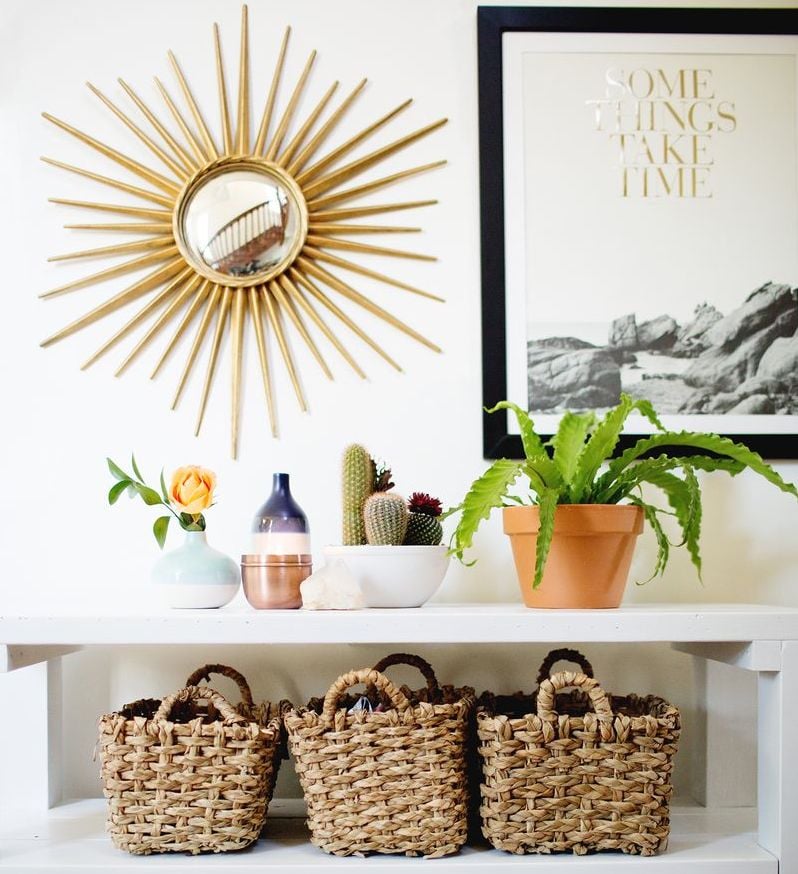
There’s an art to living thoughtfully in cramped quarters, but there’s a science to choosing pieces that will make the most of your square footage. These decorative essentials seem to pop up in the most stylish small spaces again and again. So tell us, are these space-saving pieces in your home?
Source: A Beautiful Mess
Nesting Tables
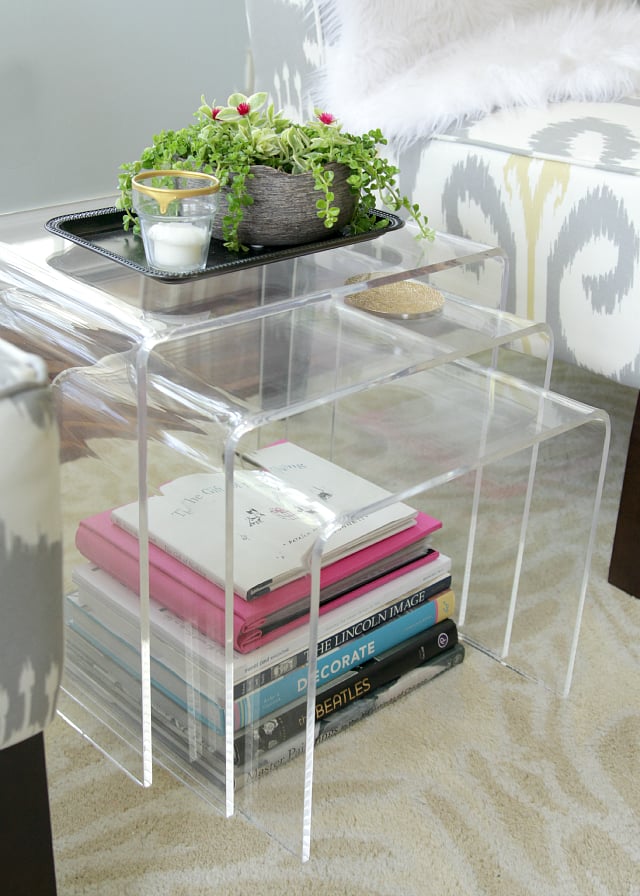 Image Source: Decor Fix
Image Source: Decor Fix
Three tables for the space of one? That’s the beauty of nesting tables. Fan them out when you need more surface area, move them around if you have guests, then tuck them in when you’re done.
Bonus tip: choose an acrylic option, like the set Decor Fix blogger Heather Freeman has to take up less visual space!
Poufs
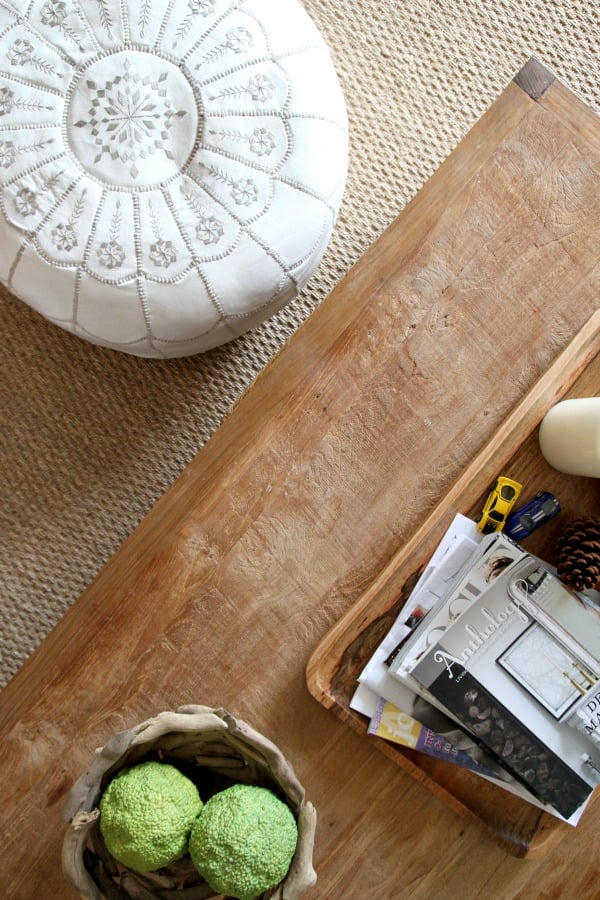
Image Source: House*Tweaking
If you’re a pouf pessimist, you’re underestimating their versatility. Set snacks out on your coffee table, and watch your friends flock to the poufs for prime seating. Position one in front of a chair, and you have an instant lounger. Place one next to your sofa, set a tray on top, and admire your new side table. Best of all, they can be stacked or stored under your coffee table when you aren’t using them.
Floating Shelves
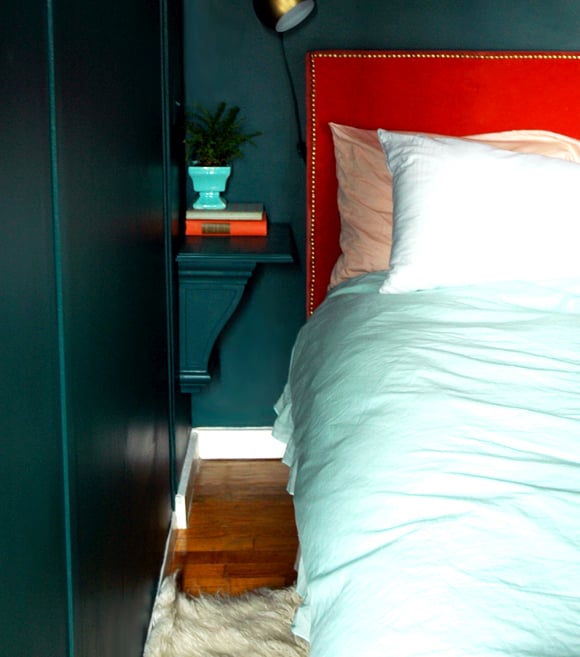
Image Source: Little Green Notebook
Floating shelves are ideal for adding more storage than your floor plan allows for. This cramped bedroom didn’t have room for a nightstand, but Jenny Komenda from Little Green Notebook created a smart floating-shelf alternative.
Large Mirrors
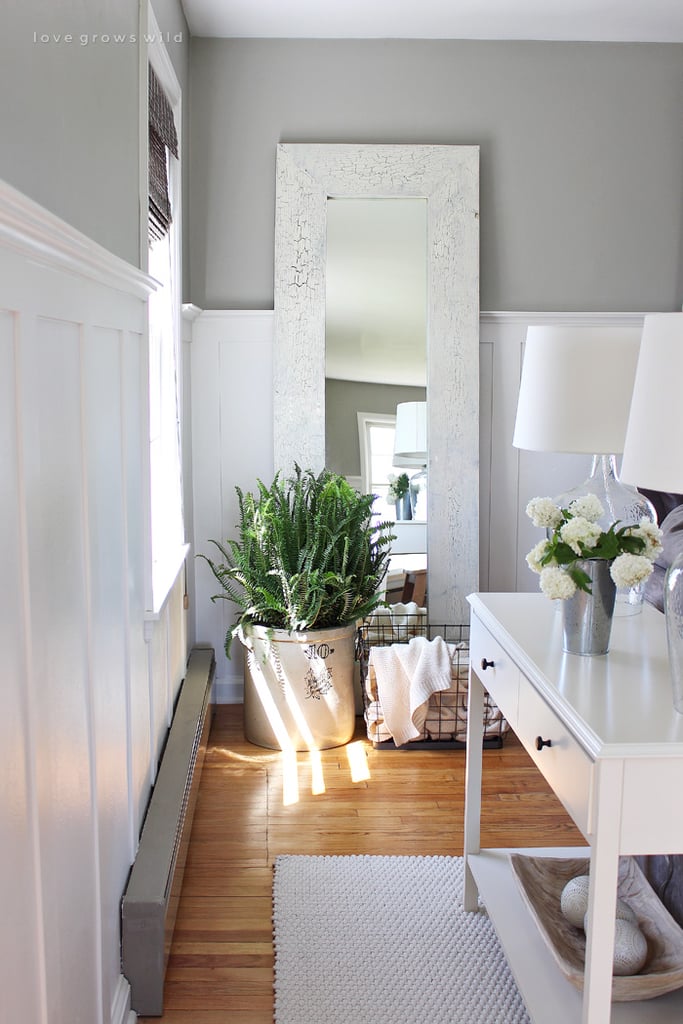 Image Source: Love Grows Wild
Image Source: Love Grows Wild
If you can’t knock down walls, add mirrors. They have the power to reflect light and visually expand a room, so it looks much larger than it actually is.
Pro tip: try styling a large mirror (like the one in Jillian Harris’s home) by layering it behind another piece of furniture.
Hanging Storage
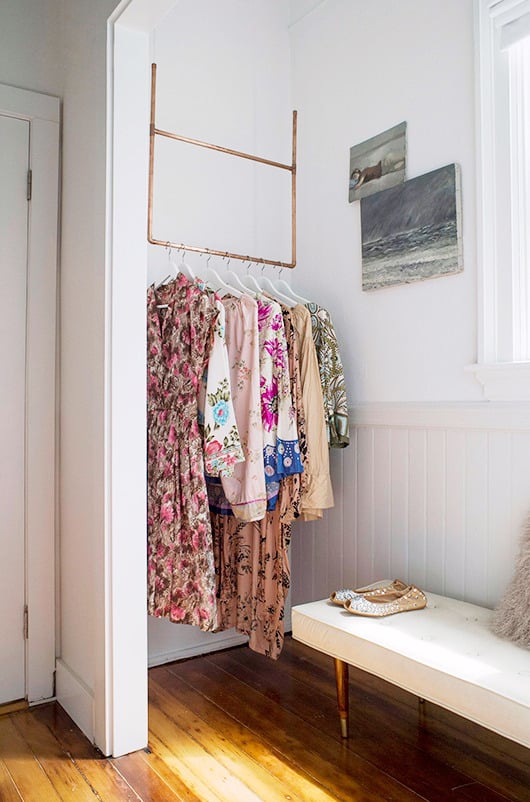
Image Source: SF Girl by Bay
You may not have a walk-in closet, but even an unused nook or corner can serve as an impromptu closet if you hang a DIY copper-pipe rack.
Baskets
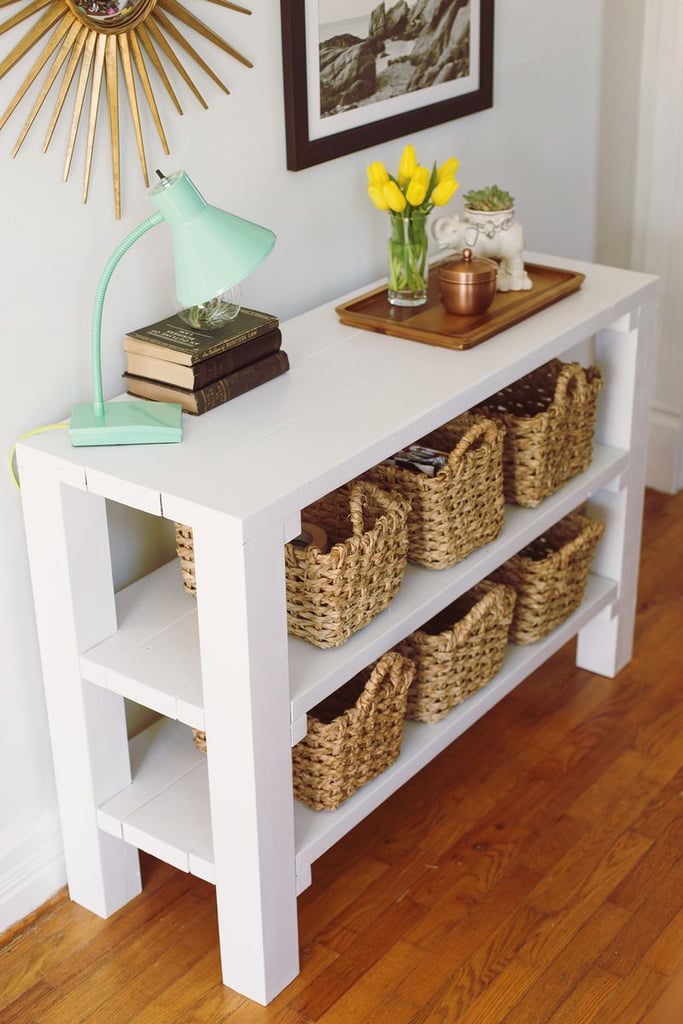 Image Source: A Beautiful Mess
Image Source: A Beautiful Mess
Whether you choose larger lidded options to slide under a console table or line shelves with smaller versions, baskets are essential for organising clutter.
Rolling Carts
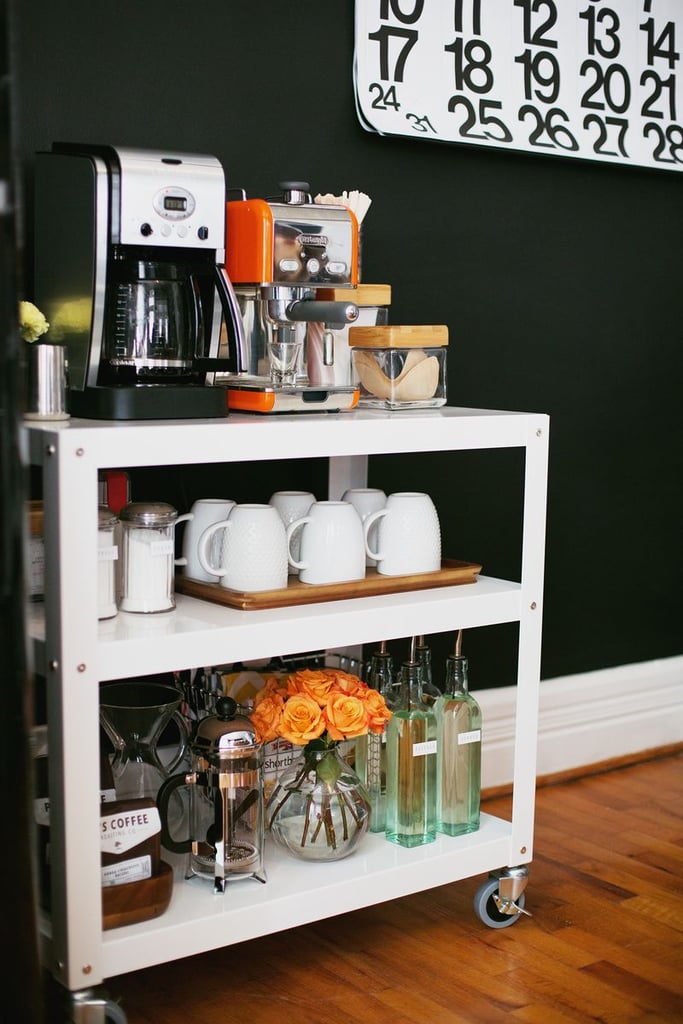 Image Source: A Beautiful Mess
Image Source: A Beautiful Mess
There are a myriad of ways to utilise a rolling cart. It can be used as everything from a bar cart (or better yet, coffee station!) to a nightstand. Wheels make it easier to move to different spots . . . like the living room, if you’re entertaining.
Pretty Boxes

Source: Manuel Rodriguez for One Kings Lane
The key to making any bookshelf look immaculately streamlined is to load it with beautiful boxes. It’s the perfect way to hoard anything from receipts to your washi tape collection without having your belongings look like a mess.
Under-the-Bed Storage
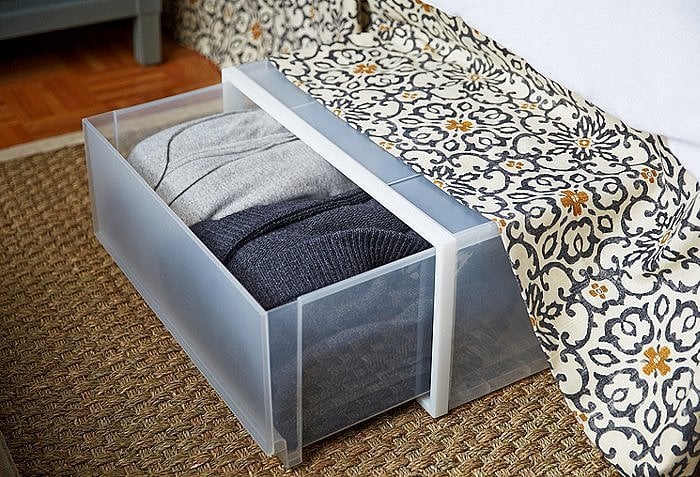 Image Source: Tony Vu for One Kings Lane
Image Source: Tony Vu for One Kings Lane
A bed skirt and a plastic pull-out container is your ticket for storing seasonal clothes without anyone having to know. You have the space, so why not use it?
Hanging Coatracks
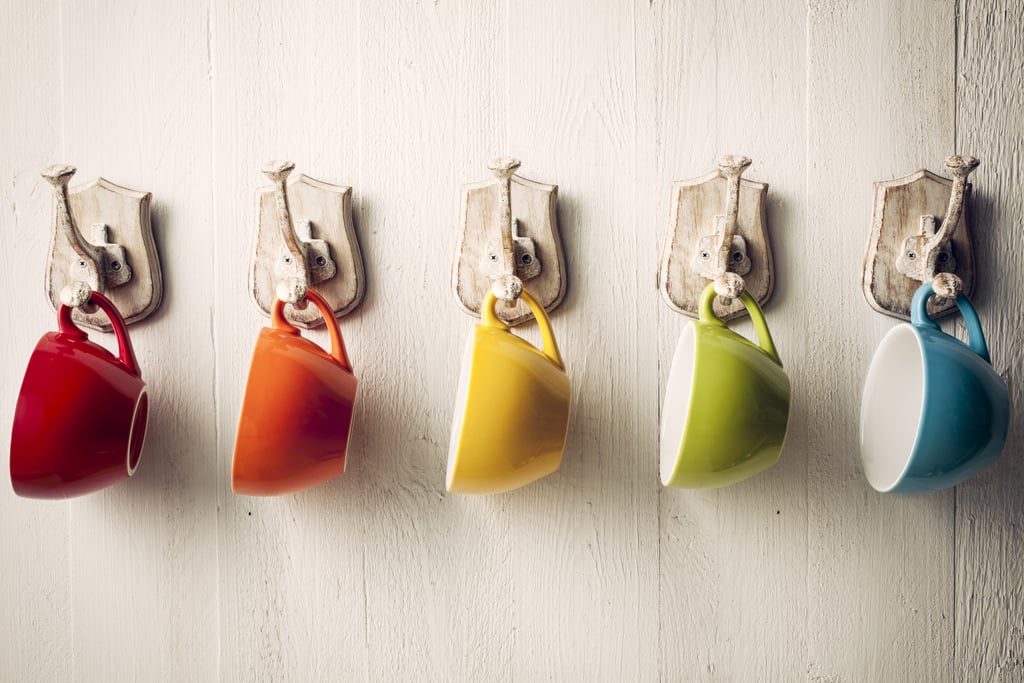 Image Source: iStock
Image Source: iStock
Sure, you could hang coats or hats from these racks, but there’s no need to stop there. Display a set of cabinet-hogging mugs in your kitchen, or organise necklaces in your bedroom. The possibilities are endless.
Stackable Storage
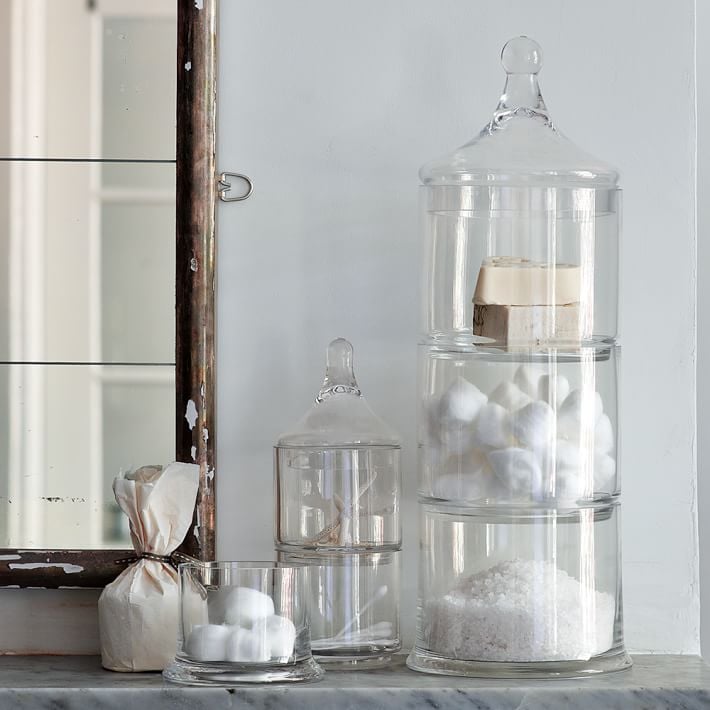 Image Source: West Elm
Image Source: West Elm
If you’re short on counter space, think vertically. This stackable apothecary set is ideal for keeping bath and beauty supplies within reach.
Slim Hangers
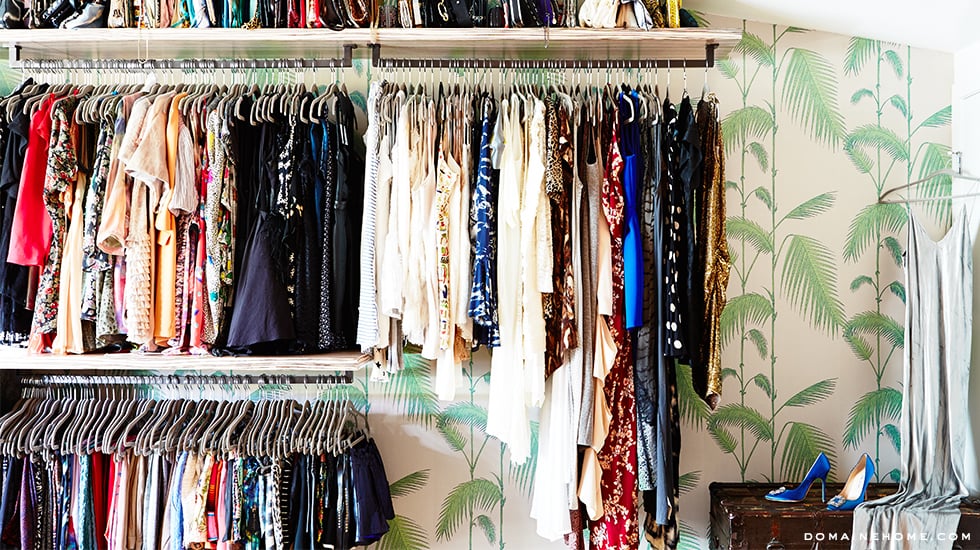 Source: Justin Coit for Domaine Home
Source: Justin Coit for Domaine Home
Former-reality-star-turned-fashion-designer Whitney Port uses these slim hangers to pack in as many clothes as possible in her cute closet space.
Comments (0)
09 April 2018
By portermathewsblog
Author: REIWA President Hayden Groves via reiwa.com.au
 Although rent prices across the state have been on a downward trajectory for the last couple of years, the rate of decline has slowed with the median rent price holding steady at $350 per week since April last year.
Although rent prices across the state have been on a downward trajectory for the last couple of years, the rate of decline has slowed with the median rent price holding steady at $350 per week since April last year.
The number of rental properties on the market has also improved, declining to approximately 8,500 listings metro wide, well down from the peak of 11,300 in 2016.
While Perth landlords don’t enjoy the dominance they experienced a few years ago, property investment is still a smart decision. And thankfully, interest rates on borrowings continue to sit at historically low levels, mitigating some of the short term financial discomfort resulting from lower rent prices.
Get your asking price right from the start
When pricing your property and preparing it for lease, it’s crucial you heed the advice of your REIWA property manager. Tenants are out there in good numbers, in fact, leasing activity reached an all-time high last year and remains at above-average levels in 2018.
Provided your rental property is marketed competitively, you have a very good chance of securing a tenant. However, if you choose to price your property higher than your agent’s recommendations, tenants are very likely to bypass your listing.
The first two weeks of listing your property for rent are the most crucial. Get your initial asking price wrong and you can end up chasing down the market, destined to end up with a weekly rent price below market value, plus you’ll bear the rent cost you missed out on when your property was vacant.
Forecast looks positive for landlords
Pleasingly for landlords, the Perth rental market has improved over the last six months and we are slowly seeing it transition into a more balanced market.
The Perth vacancy rate declined to 5.3 per cent in January – the lowest level since July 2015 and down from a peak of 7.2 per cent in June 2017. This sharp decline indicates that normalcy is returning and market parity, in terms of supply and demand, is not far away.
Despite these obvious improvements, REIWA’s forecast for 2018 cautions against expectations of rapid growth in rent prices over the coming year. Property owners are still advised to meet the market – you are better off with less rent per week than having a long vacancy period with no rental income at all.
It is also advisable to be flexible with the conditions you put on your rental. For example, not allowing tenants who own a pet to rent your property can deter people who would otherwise be interested. It’s in your best interest to consider tenants with pets on a case-by-case basis, secure in the knowledge the bond, pet bond and landlord insurance will be there to cover any pet-related damage.
For obligation free landlord assistance Sarah Morgan 9475 9622
Comments (0)
06 April 2018
By portermathewsblog
Image Source: POPSUGAR Photography / Julia Sperling
Home decorating is a hefty investment. Whether you’re renovating or rearranging a room, shopping for a new piece of statement furniture, or designing a new home, there’s always plenty of what ifs to consider. Where to put the lounge? Will it even fit? Ivory or eggshell? It’s a process that can make the best of us question our decision-making abilities.
Of course, like any educated 21st-century citizen would do to make life easier, you turn to apps. And of course, like any 21st-century dilemma, there are plenty of technological solutions for it. Below, we’ve found the five best apps to help you in whatever decorating rut you may find yourself in.
For Inspiration and Ideas
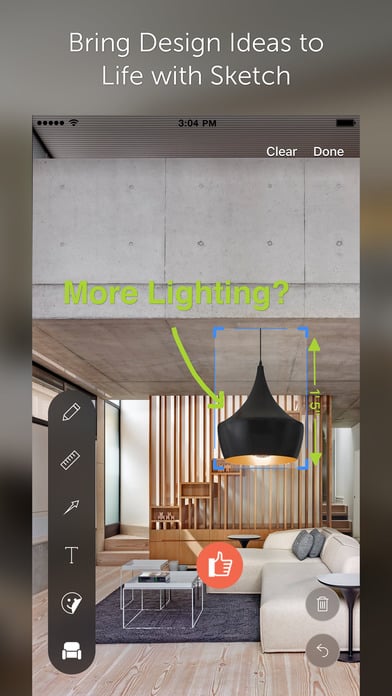
Try: Houzz Interior Design Ideas, Free on iOS and Google Play
Browse through countless photos for inspiration, use the sketch feature to bring your dream room to life, or find a local home professional to help you out with all your decorating needs. The app’s also got a nifty product section to make sourcing products easy.
For Colour Selection
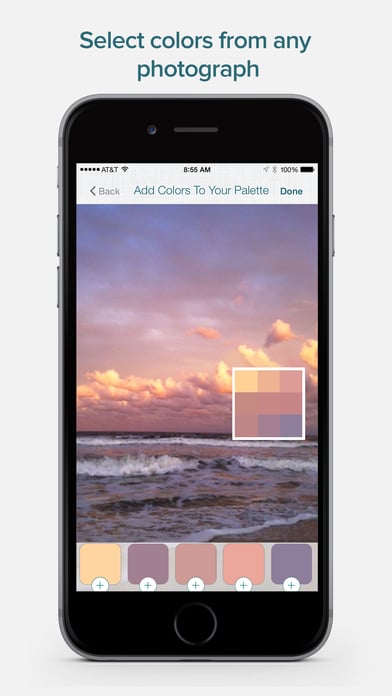
Try: Color911, $5.99 on iOS
Whether you want to create a colour scheme for a room, or can’t decide what shade of turquoise will match your throw pillows, Color911 makes colour selection easy. Choose and download from more than 100 colour themes, or build your own custom palette library from photos.
For Collecting Measurements
Try: Photo Measures, $10.99 on iOS and $4.99 on Google Play
Love the look of a couch but aren’t quite sure if it’ll fit in the space you have? Photo Measures takes the guesswork out of this and allows you to snap photos of every room and draw measures on it. Record and save everything from your living room space to bookshelf width.
For Room Planning
Try: Mark on Call, $4.49 on iOS
Who said floor plans were intimidating? Mark on Call is like having a personal interior designer at your fingertips, allowing you to map out each room to precision. Enter your room and furniture dimensions and you can rearrange pieces until your heart’s content, even with your skin or finish of choice.
For Real-Time Visualisation
Try: IKEA Catalogue, Free on iOS and Google Play
The app’s 3D and augmented reality feature allows you to visualise what pieces of furniture will look like in your home, meaning hassle- and worry-free shopping. You can even pull pieces directly out of current catalogues, or choose from iconic IKEA pieces in the library.
Comments (0)